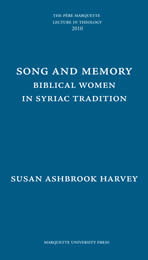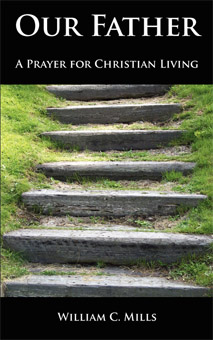Earlier, I mentioned one of several new books on the religions of the Silk Road. I've just finished reading Richard Foltz's slender volume:
Foltz teaches religion at Concordia University in Montréal. He has here updated a book first published in 1999. It would be an excellent text to use in a course on "Eastern" religions, or on the historial-social-economic-religious development of that part of the world from the eastern Mediterranean across the Eurasian steppe through to China. Undergraduates should benefit from a lucid presentation that gives enough detail to make sense of an enormous swath of history and geography without overwhelming them under a blizzard of arcane details. Foltz writes with a very deft balance and a very even-handed presentation of many different historical periods, geographical circumscriptions, and religious traditions, including Zoroastrianism, Islam, Manichaeanism, Buddhism, Judaism, and Nestorian Christianity. He has packed a great deal into a small text.
That said, there are two relatively minor concerns about this text. The first is that the footnotes would suggest that parts of the book were not thoroughly updated. His preface, which is new, notes how much has changed in the last decade, but his bibliography seems not to reflect this in places. There are at least two bibliographic lacunae: first in the area of Syriac Christianity, and second in the nature of the encounter between Islam and other religions, especially Eastern Christianity. There has been an outpouring of works in the last two decades on Syriac realities, but one finds almost none of those noted here--inter alia Sebastian Brock, Susan Ashbrook Harvey, Dietmar Winkler, Robin Darling Young, and Sydney Griffith are all absent from the notes and bibliography. Several footnotes reference books published in the 1970s.
This problem is especially noticeable in chapter seven, which begins by lamenting the fact that "historians have tended to breeze over the question of exactly how and when Christianity was extinguished in Central Asia" (127), but then Foltz offers little to rectify this problem. Christianity was present well into China (as he nicely puts it earlier in the volume, "Nestorian Christianity, expelled as a heresy from the Byzantine realm, moves eastward, touches hundreds of thousands...[of] people, and appears centuries later like a bad dream to the first Catholic missionaries in China who find it comfortably entrenched there as the recognized resident Christianity of the East" [9]) but when it disappears, we are not often given adequate, much less comprehensive, explanations of why. Christian historians, he says, have not shed much light on why their faith disappeared, apart from lamenting its loss in terms of "tragedy, of promise unfulfilled" (129). Foltz's own contribution towards an historical explanation adds little. He says that one should not look at the problem as one of loss, but instead "marvel at the 'success' of Christianity in Asia, which thrived for over 1,000 years." (That's not an answer, but a dodge.) He also says that "one aspect that has not been emphasized is the lack of a powerful Nestorian entity sponsoring trade" (130). And that's it. Much of his book focuses on the relationship between "mercantile and missionary activity," as he puts it earlier, and there is much to this thesis, but it would have been nice to see it fleshed out with greater detail in this particular case.
The second area I would quibble with is that he--albeit briefly--slips into the habit, common among historians and religious studies scholars alike (and, alarmingly, not a few Christians I know), of treating ecumenical councils as merely power-politics in fancy dress. Thus he sweepingly says that "doctrinal disputes within the early Christian church were a reflection of the struggle for supremacy between the highly placed advocates of various interpretations, and thus tended to be identified with particular regional power bases" (60). He illustrates this by reflecting on the twin fates of Nestorius as patriarch of Constantinople and Cyril as patriarch of Alexandria, and the conflict between them at the Council of Ephesus--reflecting, of course, the wider divergence between Antiochian and Alexandrian Christologies that would converge in the famous Chalcedonian synthesis. (On this question, a much fuller treatment of the Christological divergences is offered in
Kenneth Yossa's recent book.) Yes, Cyril used his imperial connections with Pulcheria, sister of the emperor Theodosius II, to have Nestorius banished; and yes every ecumenical council saw such antics--but so what? One cannot justly see Ephesus as solely and simply "politics" and personalities at work in a mishmash of Machiavellian machinations: that is to prescind unhelpfully from the larger and all-important question of
truth.
In my experience, too many people melodramatically collapse on their fainting couches as they purport to be "scandalized" after reading of the (horrors!) "politics" of the ecumenical councils. Such people are what I call ecclesiological monophysites: they seem to think that the Church should be of one divine nature in which the sometimes dirty rough-and-tumble of human "politics" has no place. But, because we are humans and not angels, there is politics in everything, and in itself politics is not bad. Some seem to expect that if something so vulgar as a doctrinal debate had to be held, it should have been quickly and quietly resolved over cucumber sandwiches at a church tea in which no voices were raised and no hair was out of place among the white-gloved set. Others seem to think that the councils were but brawling matches among bloody-minded bishops who bashed each other into submission, or berated the emperor to do so, and sycophantically cheered him on when he did. Foltz very briefly seems to incline somewhat towards the latter view, a view which is regrettable because it is a simplistic and reductive one that serves nobody well. In point of fact the councils, like the Church herself and Christ Himself, were "dyophysite" bodies, reflecting both the human
and divine natures of the Church: the messy "politics" in the human--including sinful actions on the part of some--
and, more important, the divine guidance of the Holy Spirit, who ensured that the Church ultimately got it right. Whether the Church did get it right is, of course, not a question an historian can settle: it is a question of
faith. And, to be fair, Foltz is not writing as a believer, and so we do not expect him to settle it.
Still, these are minor quibbles in a short book. In sum, this is, as I say, a very cogent and fascinating introduction to a complex and variegated world of multi-ethnic, multi-religious interactions in their economic, geographical, and historical contexts.










